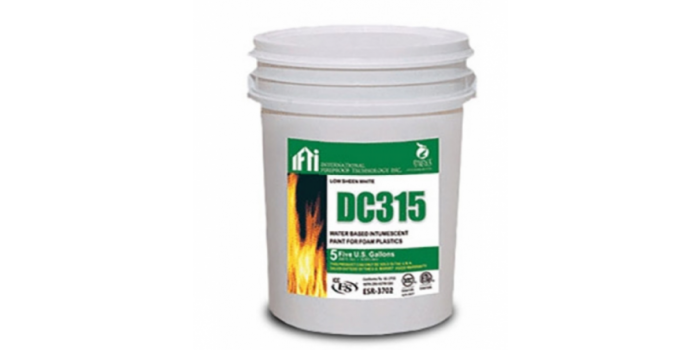Federal Tax Credit
November 29, 2022
In today’s construction industry, where safety and compliance are more important than ever, proper fire protection of spray foam insulation is critical. One of the most trusted solutions on the market, DC-315 intumescent coating, plays a vital role in meeting fire safety standards. But more is not always better—especially when it comes to applying this fire-protective coating.
Understanding DC-315 and Its Role in Fire Protection
DC-315 is an intumescent coating designed to protect spray foam insulation—a highly effective thermal and acoustic barrier that is unfortunately also flammable. When exposed to high temperatures, DC-315 expands to form a protective char barrier that slows the spread of flames and heat. This expansion is key to its fire-retardant performance, allowing structures to meet stringent fire safety codes for both residential and commercial buildings.
However, for this product to work as intended, it must be applied correctly. Applying too much DC-315 may seem like a way to boost protection, but in reality, over-application can undermine performance and drive up project costs unnecessarily.
The Risks of Over-Applying DC-315
It’s a common misconception among some contractors that a thicker coating means better protection. In the case of DC-315, that’s simply not true. Over-applying this intumescent paint can lead to uneven expansion, reducing its ability to form a consistent fire-resistant barrier during a fire event.
In addition to performance issues, overuse of the product leads to inflated material and labor costs—negatively affecting both profitability and project efficiency.

Tips for Proper Application: Follow the Guide, Not Your Gut
1. Accurate Coverage Measurement
Before application, carefully calculate the total surface area to be covered. During the process, use wet film thickness (WFT) gauges to monitor the coating’s uniformity. Spot checks throughout the project ensure consistent coverage, which is essential for the coating to work properly.
2. Adhere to Manufacturer Specifications
Always refer to the DC-315 Application Guide or the appropriate ICC-ES evaluation reports for required thickness levels. A single coat should not exceed 24 mils WFT. If more coverage is needed, apply multiple coats, allowing at least four hours of drying time between layers. This ensures the coating maintains its intumescent properties and effectiveness during a fire.
3. Invest in Professional Training
Proper training significantly reduces the risk of misapplication. Certified contractors understand the nuances of applying DC-315, including how to adjust for environmental conditions and substrate types. Training also builds confidence in interpreting safety guidelines and technical specifications.
Key Coverage Rates for DC-315
DC-315’s performance depends on achieving the right thickness and coverage:
Using these guidelines, contractors can order the right amount of product, apply it correctly, and avoid costly waste.
Why It Matters: Safety, Compliance, and Cost Control
When applied according to the manufacturer’s specifications, DC-315 delivers proven, reliable fire protection. Over-application, on the other hand, can lead to poor performance and higher costs. By following the DC-315 Application Guide, professionals can ensure their projects meet fire safety standards without overspending or risking performance failures.
Proper application is not just a matter of best practices—it’s a matter of safety and compliance. Getting it right the first time means better results, safer buildings, and more efficient use of resources
Need Help With DC-315 Application?
Profoam offers expert support and training resources to ensure your team applies DC-315 correctly and efficiently. Contact us at 706-557-1400 for guidance, training opportunities, or to shop our selection of fire-protective coatings.